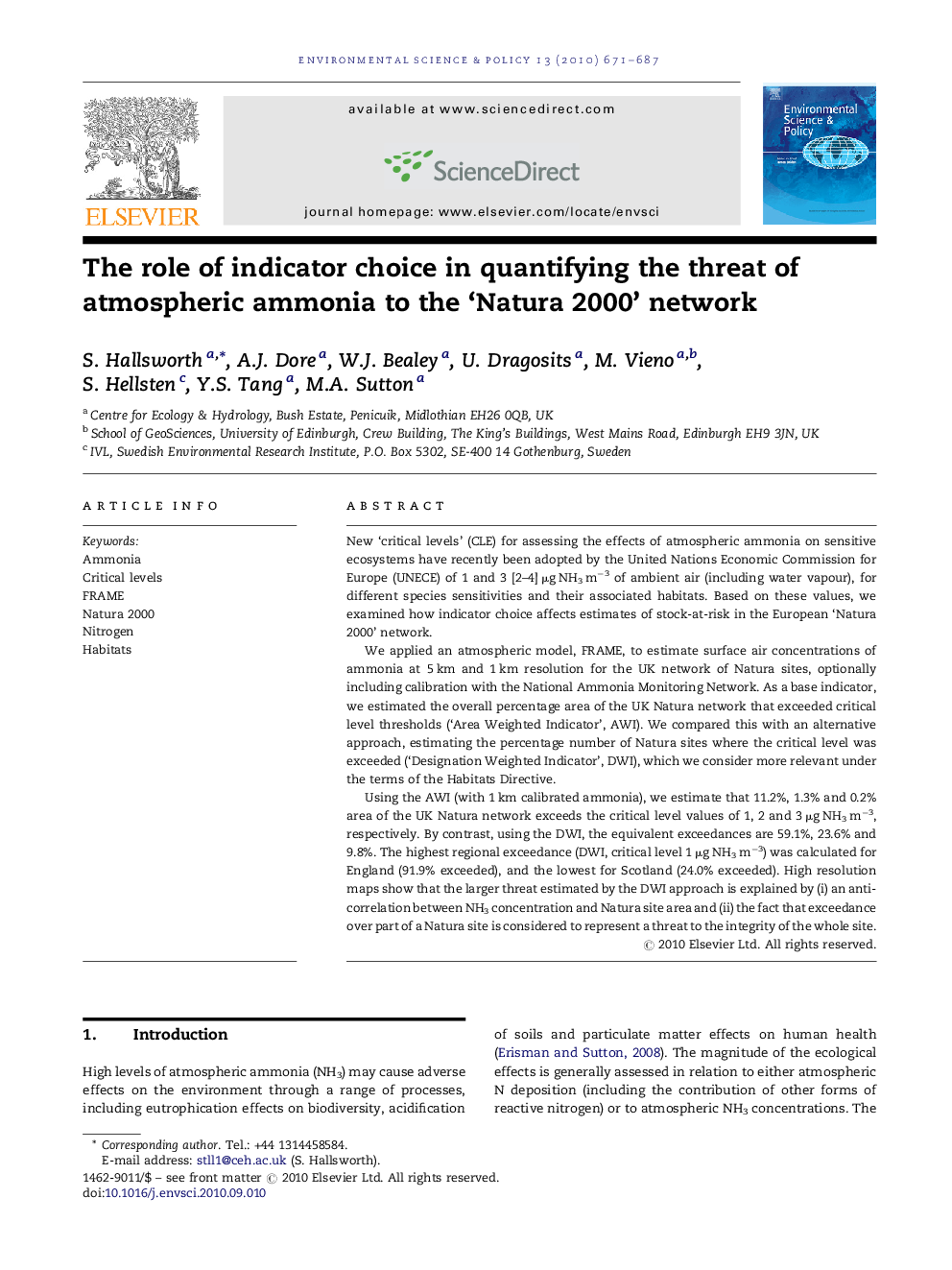| کد مقاله | کد نشریه | سال انتشار | مقاله انگلیسی | نسخه تمام متن |
|---|---|---|---|---|
| 1053936 | 946736 | 2010 | 17 صفحه PDF | دانلود رایگان |

New ‘critical levels’ (CLE) for assessing the effects of atmospheric ammonia on sensitive ecosystems have recently been adopted by the United Nations Economic Commission for Europe (UNECE) of 1 and 3 [2–4] μg NH3 m−3 of ambient air (including water vapour), for different species sensitivities and their associated habitats. Based on these values, we examined how indicator choice affects estimates of stock-at-risk in the European ‘Natura 2000’ network.We applied an atmospheric model, FRAME, to estimate surface air concentrations of ammonia at 5 km and 1 km resolution for the UK network of Natura sites, optionally including calibration with the National Ammonia Monitoring Network. As a base indicator, we estimated the overall percentage area of the UK Natura network that exceeded critical level thresholds (‘Area Weighted Indicator’, AWI). We compared this with an alternative approach, estimating the percentage number of Natura sites where the critical level was exceeded (‘Designation Weighted Indicator’, DWI), which we consider more relevant under the terms of the Habitats Directive.Using the AWI (with 1 km calibrated ammonia), we estimate that 11.2%, 1.3% and 0.2% area of the UK Natura network exceeds the critical level values of 1, 2 and 3 μg NH3 m−3, respectively. By contrast, using the DWI, the equivalent exceedances are 59.1%, 23.6% and 9.8%. The highest regional exceedance (DWI, critical level 1 μg NH3 m−3) was calculated for England (91.9% exceeded), and the lowest for Scotland (24.0% exceeded). High resolution maps show that the larger threat estimated by the DWI approach is explained by (i) an anti-correlation between NH3 concentration and Natura site area and (ii) the fact that exceedance over part of a Natura site is considered to represent a threat to the integrity of the whole site.
Journal: Environmental Science & Policy - Volume 13, Issue 8, December 2010, Pages 671–687